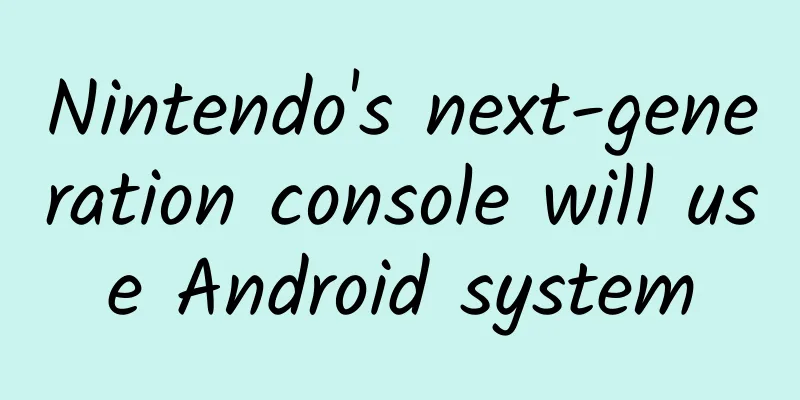In Praise of the Independent Programmer

|
Parkinson’s Theorem[1] tells us that “the amount of work done will increase until the time available is filled, given the time it can be done.” Applied to software, this means that applications tend to become bloatware, extremely bloated programs whose complexity makes them nearly impossible to debug and maintain. Today, we see happier counterexamples, both in the past and in the present, of ambitious products created by “hermit programmers.” Long ago, we admired the "solo climber" who independently wrote a masterpiece on a barebones computer【Note 2】like an Apple II with only 64kb of memory (yes, K - not M, let alone G) and a 1Mhz 8-bit processor (again, M, not G). In the past, that giant was Paul Lutus.[3] By his own admission, he fits the mold of a hermit programmer: “In the computer business, I’m widely known as the Oregon Hermit. According to rumor, I write personal computer programs in isolation, eschewing food and sleep to work in a state of endless retreat. I hang up on important visitors so that some subsequent programming ideas won’t be lost, and I live at the end of a dirty road in the wilderness. I’m here to tell you that these vicious rumors are absolutely true.” When I visited Apple headquarters in Cupertino, California, in 1981, Paul Lutus, of Apple Writer fame, had earned a seat next to Jobs and Wozniak in Bandley Drive Hall. Admirers told of how he would fly in his private jet, collect his royalty checks, and then immediately fly back to his home in the woods in Oregon. When the word processing industry was new (Exxon Office Systems and its Vydec professional workstations), I looked at Lutus's tiny, underpowered toys with disdain. Then I visited the Apple warehouse, where I saw a forklift loading panels of Apple Writer boxes. That's a lot of software! After some quick calculations and a lot of questions, I came to the conclusion that Apple Writer would easily beat the software of all those word processing workstations with "pros". I couldn’t understand it at the time, but I witnessed the destruction of a man. (For the real geeks, Lutus’s website, arachnoid.com, is filled with delightful “lone climber” anecdotes and attitudes: He used GraForth, his extension of the Forth programming language with images and sounds, to convince an individual to visit: I had created a "calculator letter" in disk form using the GraForth graphical language I had written, which displayed pictures and messages. Then, a cabin on the top of a mountain, the door opened, and music started. It was designed to convince someone to come visit me in Oregon, and it worked. At NASA, he wrote programs for the HP-25 and HP-67 handheld calculators to calculate space flight trajectories and "ephemerides [Note 5]": Instead of dealing with the computer part and the 24-hour delay, it uses a device on a desk and can get reasonably accurate results to the second. For time, this is almost a miracle. The Programming Handheld Calculators article ends with a surprising digression about Wikipedia.) Bill Budge is another well-known independent programmer. In 1981, Bill Budge wrote a pinball game called Raster Blaster for the Apple II. This was quite a feat, considering that the 1 MHz 8-bit processor was "obviously" incapable of supporting the fast graphics, collision handling, and interesting sound effects that the game required. The next stage he climbed—and for which he eventually became famous—was the Pinball Construction Set, a set of modules that fools like me could combine into custom pinball designs. At the time, in 1983, it was (undoubtedly) seen as another astounding achievement, a brilliant way to use every last bit of the 6502 chip cycle to delight the user. (Marketers later hijacked the term and packaged it as Surprise and Delight™, using it in the distant hope of masking the hollowness of the product.) When the unknown computer wise guy uses it, the programmer's job is to run under the feet of the user walking on the water and make sure those feet don't get wet. The Pinball Construction Set does just that. That same year, I ran into Bill Budge while waiting in line at an Apple event. After expressing my admiration for his superhuman programming skills, I also expressed my concern that he would reveal the graphics algorithms inside the Pinball Construction Set in an article in SoftTalk magazine. Would that revelation secretly undermine his reputation? The young wise man gave an unforgettable answer: A recipe book does not make a chef. At this point, I can’t finish this article without mentioning Bob Frankston and Dan Bricklin, the co-authors of the groundbreaking VisiCalc.[6] VisiCalc gave rise to Excel, which means that the impact of VisiCalc is felt every day in every corner of business, big and small. That was the way it was back then… Computer machine operating systems were the “P” in PC (personal computer) applied to the programmer. He or she (mostly he at that time) sitting alone in a cabin in the woods could have a profound impact on the universe. What a nostalgia. Today, it seems that such an extraordinary achievement is no longer possible. As I write this, I'm downloading the latest Xcode, Apple's programming environment and toolset, on my iMac. It takes up 7.77G of disk space. The "outdated" word processor I'm using as I write this (Pages 2009) takes up 388M; the newer, sillier Pages version 5.5.3 takes up 478M. Operating systems have become so complex that it’s impossible for a single person in isolation to internalize how they work enough to write code that lets a user walk on water. For “Paul Lutus in 2015,” there’s no such environment. But is it really that scary? It turns out that the size and complexity of operating systems and development tools do not present an entirely insurmountable obstacle; we can still find a large number of programs written by one person. One example is Preview, the all-in-one file preview and editing program for the Mac. Although the Wikipedia entry is outdated and less than enthusiastic, a Macworld article titled "The many superpowers of Apple's Preview" (Part 1, Part 2) does justice to the power and flexibility of this application. Please read the article and join me in expressing gratitude for the labors of the single, unknown programmer who has been with this software since the NeXT days. Preview even spawned CAD files, which are .DAE extensions, aka Collada files, an interchange format for CAD programs. You can play with 3D images without the original CAD program. Impressive—and the dismal state of iTunes (which some people call Apple's Windows Vista), Pages, and even Mail, which still have bugs and crash after all these years, brings me to dark thoughts. Is it because there are too many cooks? Newer than Preview but no less ambitious, we have Gus Mueller’s Acorn, an “image editor for humans,” now available in version 5 on the Mac App Store. To get a sense of the depth and breadth of the app, browse the documentation on the company’s website. In addition to the “straight” technical documentation, there’s an FAQ, pointers to the Acorn community, and tons of video tutorials for beginners, intermediate, and advanced users. (Gus Mueller calls his Everett, Washington-based company “a mom-and-dad shop” because his wife, Kristin, writes documentation for him when she’s not working as a physical therapist.) On my iMac, Acorn 5 is only 24.6MB. Whether it's fair or not, compare it to applications that can easily be 1.5G or more (Microsoft Word, Excel, ...), or Pages at 478MB. There is hugeness, and there is hope. Note 1: Parkinson's law is a colloquialism coined by British writer Cyril Northcote Parkinson. In 1958, Cyril Northcote Parkinson expanded this observation into a book, Parkinson's Law: The Pursuit of Progress. In this book, Parkinson's law is used as a mathematical equation to describe the rate at which bureaucratic organizations expand over time. Parkinson observed that the total number of employees in a bureaucratic organization usually increases at a rate of 5-7% per year. He believed that there were two forces causing this growth: (1) an official wants his subordinates to increase, but does not want to increase enemies by firing them; and (2) officials will create work for each other. https://zh.wikipedia.org/wiki/%E5%B8%95%E9%87%91%E6%A3%AE%E5%AE%9A%E7%90%86 |
<<: Facebook releases React Native for Android
>>: A brief analysis of the Android Volley library source code (HTTP Request part)
Recommend
Why don't many phones have a mute button?
"Why can't Android phones basically have...
Domestic mobile phones are priced at less than 4,000 yuan? It’s all due to the price-performance ratio
Domestic mobile phones have always been overwhelm...
2020 Hunan College Entrance Examination Score Line Announced 2020 Hunan College Entrance Examination Score Line
2020 Hunan College Entrance Examination Score Lin...
User growth analysis: How to segment users?
Introduction: In the growth analysis of a product...
How many floors of Wenchang Tower are needed for best effect?
Nowadays, we can see many Feng Shui mascots every...
It is said online that watching horror movies can help you lose weight, but I advise you to be cautious!!
I saw a short video some time ago: watching horro...
A review of the "fights" in 2015: The right way to fight on the Internet
[[160733]] As the saying goes, "There are no...
Six major issues that SEO grassroots webmasters must understand and pay attention to!
Many SEO grassroots webmasters know how to build ...
We can drink cow's milk and goat's milk, so why does no one drink pig's milk?
Everyone has drunk cow's milk, goat's mil...
If there is a lot of foam in the urine, does it really mean that my kidneys are not in good condition?
gossip "Excessive foam in urine indicates ki...
How will 60fps 4K video be compressed when sent via WeChat? Netizen: This compression efficiency is first-class
As we all know, when sending videos via WeChat, n...
Xiaohongshu Promotion丨How to quickly create popular notes!
I have a strong interest in customer acquisition,...
Detailed explanation of Xiaomi App Market ASO keyword ranking
Today we are going to talk about the process of X...
If the sunroof was not closed, would the owners of Nanjing Civic be in trouble?
Recently, a Nanjing Civic owner said that he was ...









